The fifth episode of Cosmos, “Blues for a Red Planet,” is an exploration of ideas about Mars—fictional, factual, and speculative—through history and into a future which has, to some extent, become our contemporary present. It’s one of the more focused episodes, without as much ranging and curiosity; the intensity is directed almost entirely at Mars itself, with a brief, related aside into molecular biology.
Following the last episode’s focus on Venus (and its value as a parable for Earth), this episode’s shift to Mars makes for one of the more uplifting and visually stunning installments in Sagan and company’s personal voyage through the cosmos. Sagan’s passion for Mars, as well as the West’s obsession with the planet throughout recent history, comes through clearly here: through the poetry of his language, as usual, and in the attention paid to painting a dramatic Martian-looking landscape, we are swept up into a dramatic narrative about the Red Planet. There is, perhaps, less science and more poetry in this episode than usual.
Sagan opens the episode by illustrating the background of our cultural interactions with Mars, noting that the planet “has become a kind of mythic arena onto which we’ve projected our earthly hopes and fears.” However, in our time, we’ve come to find that “the real Mars is a world of wonders. […] We have sifted the sand of Mars, established a presence there, and fulfilled a century of dreams.” These early lines set the tone and focus for the entire episode: Mars as myth, Mars as real, and how (Western) society has interacted with and understood it.
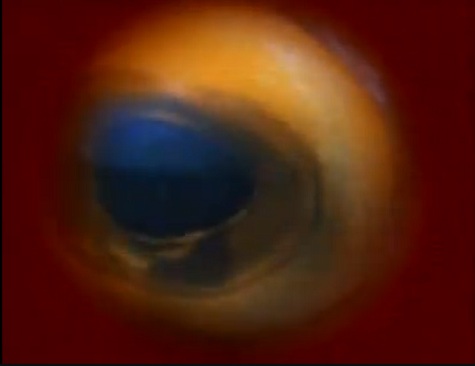
From there, the episode shifts into a reading of the introduction of H. G. Wells’s War of the Worlds while the visuals show us an alien-looking eye, juxtaposed alongside gears and lenses, staring down onto humanity going about its business. After this dramatic reading, the upheaval around the radio-play is also briefly mentioned, and then Wells’s work is used as a stepping stone into the imagination of a scientist forty years earlier: Percival Lowell. Lowell, using the work of another astronomer in Europe, decided that the appearance of “canals” on Mars must have indicated the presence of a society that had done agricultural irrigation. From there, he built his own observatory in Arizona and spent years studying Mars and sketching its surfaces—all the while believing in a dying society as the inhabitants of the red planet. However, as Sagan notes, “All in all, he believed too much.” Another scientist, Wallace, soon after showed that the temperature on Mars was all wrong for liquid water, disproving Lowell’s hypothesis.
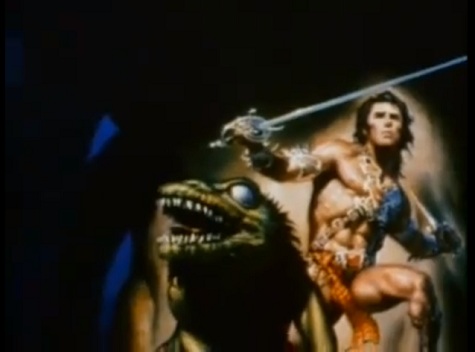
And then, there are the science fictional bits—the cultural bits. Sagan notes that Lowell’s Martians were very different from Wells’s, but that both “sets of ideas passed into the public imagination through Sunday supplements and science fiction, and excited generations of eight year olds into fantasizing that they themselves might one day voyage to the distant planet Mars.” He then discusses Burroughs’ Barsoom novels and his own emotional connection to them as a boy. However, dreaming is important: without it, we wouldn’t have ended up with rockets, based on the dreaming of Robert Goddard, the man who developed the basics that we ended up using for liquid-fuel travel to space many decades later.
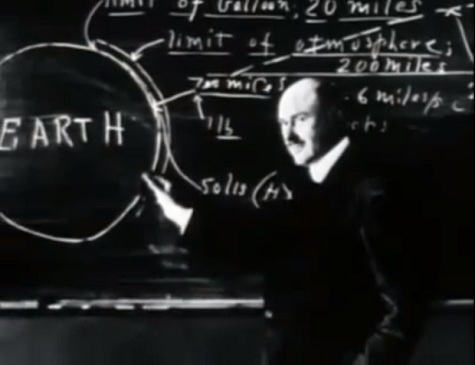
Once we developed the ability to go to space, of course, we sent the landers Viking One and Two to Mars. The majority of the last half of this episode is about the landers, their functions, and what they discovered on Mars. From there, considering the possibilities of life on Mars based on the landers’ tests, we move into a brief but stunningly lovely discussion of microbial life and the atomic bases of our own bodies. Sagan, in closing, discusses what must come next: rovers, as opposed to landers, and potentially things as science fictional as terraforming and human life on Mars—where we might, ourselves, make those canals that Lowell once believed so fiercely in.
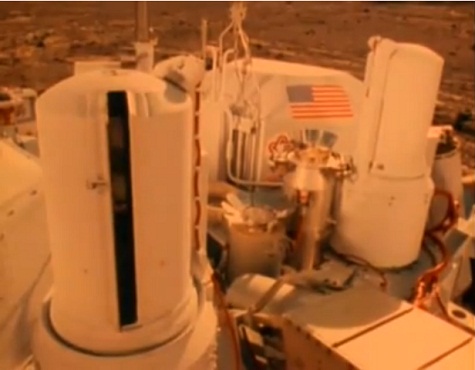
(The Update focuses on the politics of space travel, and the way that Mars’s lost atmosphere can be a cautionary tale for us.)
*
The line that stands out to me the most, in an episode full of strong words, is this: “Where we have strong emotions, we’re liable to fool ourselves.”
This speaks not only to Sagan and his co-writers’ stances on Mars, but also to the history of our fictions and speculations about it—and yet, it isn’t a condemnation. There’s nothing in this episode that hints at strong emotions being a bad thing; in fact, it’s full of provocative and emotional music, vistas, and speculation. The fact remains, though, that when we are full of passion, when we want to believe (to steal a little X-Files), we sometimes believe too much. The possibility of believing too much is a submerged thread that runs throughout this episode, and it is also the thread that most often provokes invention and creativity.
After all, it’s hard to argue that, in an episode where Sagan says things like “someday, we will careen through the corridors of the valley of the Mariners” while the camera focuses on his awed face in the ship of the imagination as he seems to do just that, imagination and love aren’t valued. In fact, this episode seems to be mostly about the poetry and the possibility of Mars—the title alone implies that, with its references to music and the use of the figurative nickname “red planet.”
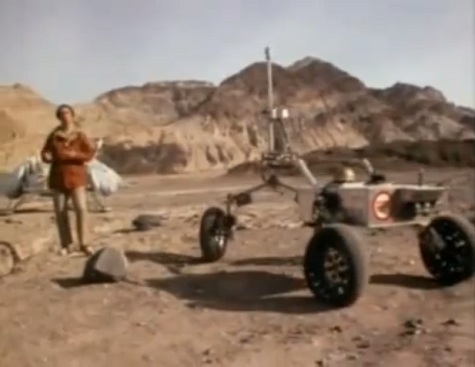
While there are scientific bits—as I want to come back to in a second—and exposition of things like the landers’ functions and tasks, the majority of the episode is dominated by visuals and handsome words, flights of fancy, reflection on the literary construction of “Mars” in things like Wells’s novel, Burroughs’s Barsoom books, and even Lowell’s imagination. Mars is myth, here; it is also a real place, which Sagan wants to point out, but it has power as a myth in Western culture still. The cinematography of this episode is particularly notable: the use of the War of the Worlds opening, the shots of Sagan in the desert (as if it is Mars) next to a facsimile of a lander, the use of the landers’ own photos—it’s all eye-catching and alien, a bit breathtaking. While every episode has had fun visuals and cinematographic tricks, this episode seems to spend the most time trying to make its subject seem real, touchable, explore-able, and personal.
As for myself, Sagan’s sober and yet still moving exploration of Mars is something that I remember from my childhood. Watching it again, now, I am astounded by the deftness with which he weaves together fiction, poetry, science, and speculation. The narratives of Cosmos are always made of many threads, including those not generally allowed in what we conceive of as scientific research. The perpetual presence of science fiction as backdrop here, too, amused and delighted me. After all, the reason we love Mars is the stories we’ve been told and told ourselves about it. Science fiction is a way of exploring a potential future; here, it is especially useful.
Of course, the science isn’t missing amongst the literature and the poetics of Sagan’s exploration of Mars. One of my favorite bits of the episode is the brief microbiology section, where Sagan’s famous speech about atoms and molecules comes from. Plus, there’s something simple and provocative about the statement, “Life is just a kind of chemistry,” and his self-definition: “I’m a collection of organic molecules called Carl Sagan.” As he continues:
“But is that all? Is there nothing in here but molecules? Some people find that idea somehow demeaning to human dignity, but for myself, I find it elevating and exhilarating to discover that we live in a universe which permits the evolution of molecular machine as intricate and subtle as we.”
That reference back to his previous comments on faith, science, and the interconnectedness of life is highly effective. It’s not necessary to believe in something magical—because the fact that we are made up of what we’re made up of, and that we can think, is magic enough. That’s a simple and yet hugely broad belief to put on the table.
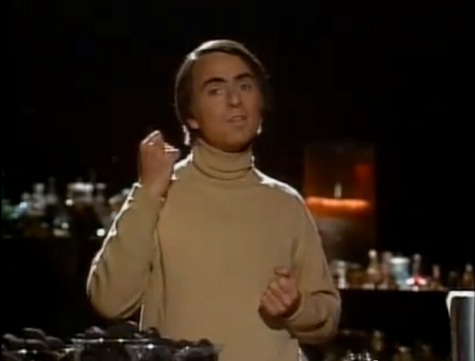
And, speaking of the table, the fake mad science segment where he mixes together all of the “elements” that make up a human body in a container is hilarious. The over-dramatized music, the bubbling mixtures, the quick jumpy shots—it’s clearly parodic and clearly intended to be humorous. (It ends up having a serious message, of course: “We could stir all we want,” but “the beauty of a living thing is not the atoms that go into it but the way those atoms are put together.”) Another particularly funny moment in this otherwise quite serious episode is the aside about how we might teach a rover how to survive on Mars: “It has a long list of dumb things it knows not to do.”
Of course, that speaks to something serious too—the fact that we have, as of now, sent rovers of greater and greater complexity to explore the red planet, in ways that Sagan only imagined and speculated on in this episode. His imagined future became our past; we have done those things, explored that planet, done far more than simply sift the soil. But that’s okay, because as Sagan’s (second-most?) memorable line in the episode notes:
“Viking is a legacy of H. G. Wells, Percival Lowell, Robert Goddard. Science is a collaborative enterprise spanning the generations and when it permits us to see the far side of some new horizon, we remember those who prepared the way, seeing for them also.”
We see for them also. We see for Sagan; we see for Wells and Lowell and Goddard. When Curiosity touched down, using the parachute structure that Sagan hints at in his speculations here, we saw for him—and with him, through time, in the process of discovery and myth/reality-making. Because, when it comes to Mars, our stories and speculations are just as important as our science, and they all lead into the future.
*
Join us in a week for a discussion of episode 6, “Traveller’s Tales.”
Lee Mandelo is a writer, critic, and editor whose primary fields of interest are speculative fiction and queer literature, especially when the two coincide. She can be found on Twitter or her website.










